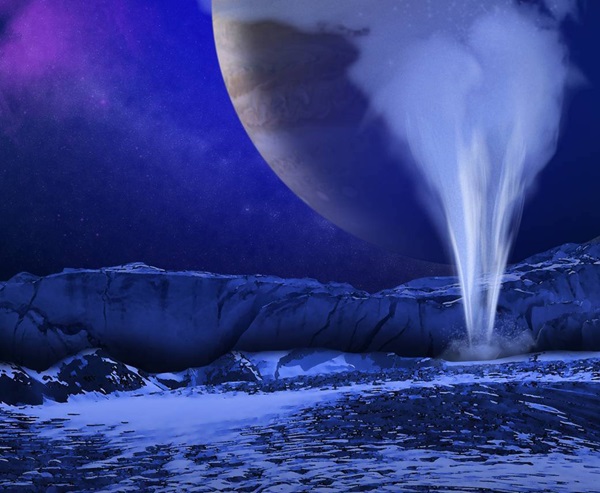Key Takeaways:
The measurements also imply that outside of plume events, Europa’s atmosphere likely has less water vapor overall than previously thought. The scientists describe their findings Monday in Nature Astronomy.
A Watery Moon
Scientists have known since the 1960s that Europa is home to water ice and, likely, a liquid water ocean beneath the surface. They predicted that radiation from Jupiter would bombard the moon’s icy surface and create water vapor.
And recent studies have turned up indirect evidence that erupting plumes inject water vapor into the moon’s atmosphere. Studies in the past decade have even spotted signs of hydrogen and oxygen in Europa’s atmosphere, but not water vapor directly.
In the new study, researchers used a telescope at the Keck Observatory in Hawaii to search Europa for specific infrared wavelengths of light that water vapor would emit. They observed the moon on 17 different dates from February 2016 to May 2017. Their instruments didn’t pick up signs of water vapor on 16 of those nights. But on April 26, 2016, they measured a large amount — roughly 2,000 metric tons — of water vapor.
Looking for Vapor
Though the researchers didn’t see signs of water vapor on the other 16 nights, that doesn’t mean there wasn’t any. In fact, the researchers believe some water vapor exists in Europa’s atmosphere at all times because of Jupiter’s radiation effect, as previous studies have shown. There was probably just too little water vapor for their instruments to be able to detect.
However, overall, the measurements imply that the typical amount of water vapor in Europa’s atmosphere is probably less than previously thought. This also means that the standout April 2016 measurement likely came from a one-time event, like a water plume.
Upcoming space missions, like Europa Clipper and JUICE (JUpiter ICy moons Explorer), will get a closer look at the moon.
“I’m really looking forward to follow-up studies of Europa and other ocean worlds,” said Lucas Paganini, a NASA planetary scientist and one of the new paper’s authors. “It has been difficult to detect water in liquid form. These detections of water in vapor form, I think, is the closest thing we have in the search for liquid water environments.”











